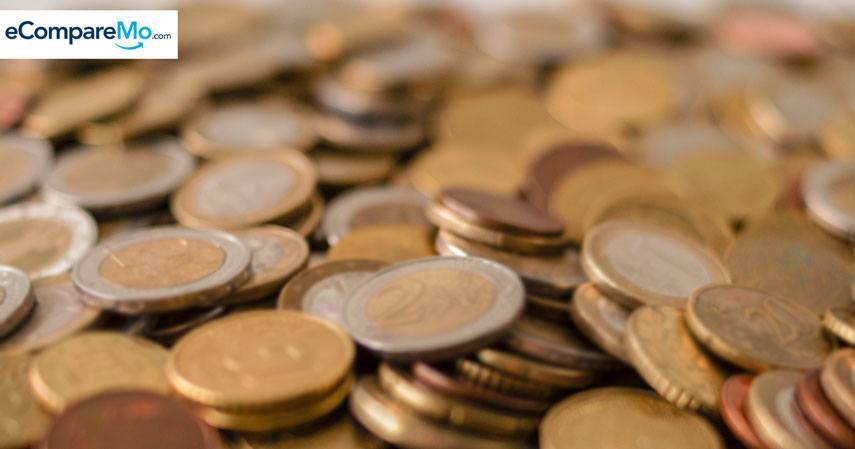8 Things You Probably Didn’t Know About The Philippine Currency
3 min readHere are some interesting facts and trivia about the peso.

In 2010, the Bangko Sentral ng Pilipinas announced that the country would finally move on from using the New Design Series, the generation of currency issued in from 1985 to 1993. The central bank started circulating the New Generation Currency (NGC), which is a quantum leap in terms of both form and function.
Since money is an integral part of our lives, it’s about time we all know a thing or two about the Philippine peso. How many of these factoids do you know about the coins and notes that pass your hands every day?
1. The Philippines isn’t the only country that uses peso as a currency.
In 16th century, the Spanish peso had a value of eight pieces of real, the Spanish Empire’s currency. Because of this, most of the colonies of the Spanish empire adapted the currency, despite some countries discarding it. As of the moment, Argentina, Chile, Colombia, Cuba, Dominican Republic, Mexico, the Philippines, and Uruguay still use the peso.
2. The very first currency where the name “Filipinas†appeared in the coins produced from 1861 to 1868.
Considered as the first series of Philippine currency, these coins issued by the Spanish colonizers had denominations in 1, 2, and 4 pesos. In 1897, “Filipinas†was changed to “Islas Filipinas†to reflect the archipelagic nature of the country. This was the last currency issued by the Spanish empire in the Philippines until their departure in 1898.
(See Related Topic:Â What Will Happen When The Peso Drops To P49 Versus A Dollar?)
3. Ever heard of “Mickey Mouse money�
During the World War II when the Philippines was under the occupation of the Japanese forces, the occupiers issued fiat currency, which became the money used by the citizens. Because the value of the money solely rests on the decree issued by the Japanese government, hyperinflation ensued. The Japanese-issued currency was also called “Mickey Mouse money†because the value of the currency was so low, it might as well be play money.
4. How about “guerilla pesos�
Despite being under the control of the Japanese government, more than two dozen local governments showed resistance by issuing emergency circulating notes, which could be redeemed in silver pesos after the war. Made using crude materials, these became the primary currency of people who didn’t want to adhere to Japanese-issued bills. As a response to guerrilla pesos, President Jose P. Laurel outlawed emergency money and reinforced its monopoly on the Philippine currency.
5. Historical revisionists say that the peso was strongest against the dollar during the Marcos regime.
However, data from the Bangko Sentral ng Pilipinas’ data says otherwise. When the late strongman assumed position after Diosdado Macapagal, the peso-dollar exchange rate was around P3.90. The peso’s value continuously plummeted during the two-decade stay of the Marcoses in power. By the time they left, the value of the Philippine peso to around P20.46 in February 1986.
6. Do you ever wonder why sometimes people don’t have enough coins for change?
It’s not because there’s shortage of coins in the country; the BSP said there are more than enough coins for each Filipino living at the moment. A big part of the 24.5 billion pieces of coins in the country are being kept in piggy banks, jars, and other containers for savings. Because of this, the central bank urges the public to put their coins in banks instead of keeping them at home so the coins will circulate freely.
(See Also:Â Demonetization Of Old Philippine Banknotes: Important Things You Need To Know)
7. Piggy banks are legal yet highly discouraged.
But melting coins for repurposing is an illegal activity and is considered smuggling. Under the Presidential Decree 247, it is “unlawful for any person to willfully deface, mutilate, tear, burn or destroy, in any manner whatsoever, currency notes and coins issued by the Central Bank of the Philippines.†In 2009, one businessman already got a sampling of this after he got caught smuggling coins to be melted for bath fixtures.
8. In 2007, a typographical error gave money collectors a new addition to their collection.
During the printing of 100-peso bills, the central bank didn’t notice a spelling mistake on former President Gloria Macapagal-Arroyo’s name: instead of Arroyo, the money had Arrovo. Unfortunately, about 1,000 pieces had already been printed and released before they noticed the error. These rare notes are currently in the hands of collectors. –Dino Mari Testa
